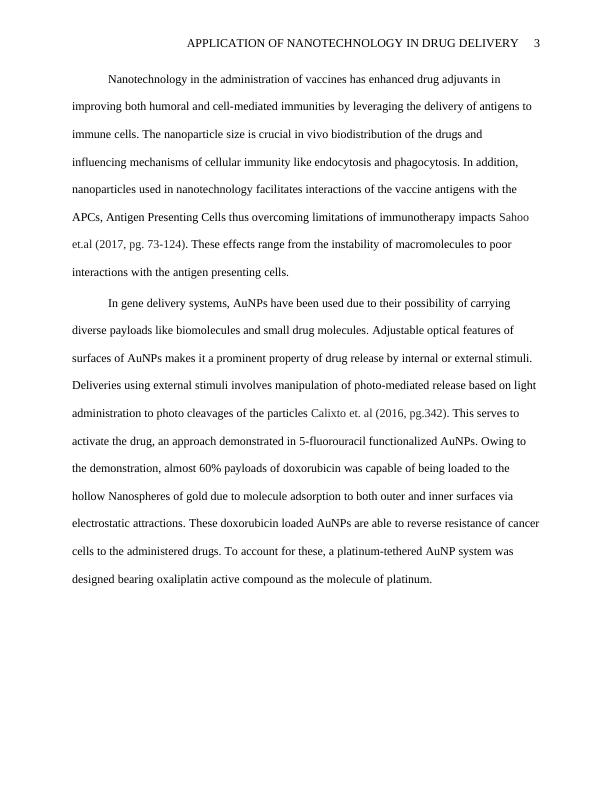Application of Nanotechnology in Drug Delivery
The application of nanotechnology to medicine, particularly drug delivery, has already had major impact in many fields.
6 Pages1235 Words382 Views
Added on 2022-12-15
About This Document
The adoption of nanotechnology in drug delivery is the stepping stone for technology breakthrough. The Nanocarriers used in the delivery systems serve to improve the pharmaceutical and therapeutical application of conventional drugs. Another advantage is that drugs loaded in the Nanocarrier particles are protected from possible controlled release, specific targeting, and enzymatic degradation.
Application of Nanotechnology in Drug Delivery
The application of nanotechnology to medicine, particularly drug delivery, has already had major impact in many fields.
Added on 2022-12-15
ShareRelated Documents
End of preview
Want to access all the pages? Upload your documents or become a member.
Targeted Drug Delivery for Leukemia Treatment via Gold Nanoparticles
|7
|1329
|374



